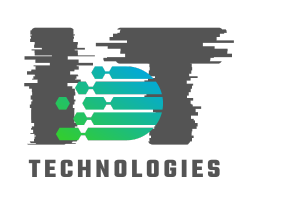
Integrating Leak Sensors for Smart Irrigation: Essential Insights
Share
The advent of advanced technology has revolutionized numerous industries, with **smart irrigation systems** taking center stage in modern agriculture. These systems are not only designed to optimize water usage but also to ensure the sustainability of resources. A pivotal component of this revolution is the use of leak sensors for smart irrigation. Understanding the importance and deployment of these sensors is a fundamental step for any tech professional or enthusiast looking to delve into the world of IoT-driven solutions.

Why Implement Leak Sensors in Smart Irrigation?
Water conservation is a pressing concern globally, and inefficiencies in traditional irrigation practices often lead to water wastage. **Leak sensors** play a crucial role in mitigating this issue by quickly identifying leaks within an irrigation system. This not only reduces water waste but also aids in lowering operational costs, making it an economically viable solution for farmers and agronomists.
Moreover, adopting **smart leak detection systems** ensures that any potential damages to crops and soil fertility caused by excessive water exposure are minimized. Implementing leak sensors offers a dual benefit of environmental conservation and financial efficiency, crucial factors in modern agricultural practices.
How Do Leak Sensors Enhance System Efficiency?
**Smart irrigation systems** equipped with leak sensors provide real-time data analytics and alerts, allowing for prompt responses to any anomalies detected. This proactive approach prevents the pitfalls of undetected damages that may aggravate over time. The interactivity and responsiveness of such systems are what make them an attractive choice for tech enthusiasts exploring innovative agricultural solutions.
Advanced **IoT technologies** enable the integration of leak sensors with mobile applications and cloud databases, providing end-users with a comprehensive overview of their irrigation infrastructure. Such integrative capabilities empower users to execute informed decisions, directly impacting resource optimization and overall productivity.
Technical Specifications and Considerations
When selecting leak sensors, it is important to evaluate their compatibility with existing systems and the potential for scalability. Assessing the technical specifications such as detection range, data processing capabilities, and communication protocols is critical for seamless system integration.
For instance, sensors connected to the Internet of Things must have reliable connectivity options, ensuring uninterrupted data transmission. Tech professionals should pay close attention to the technical architecture to facilitate efficient operation within diverse environmental settings.

Future Prospects and Industry Trends
As IoT technologies continue to evolve, the scope for **smart irrigation systems** expands. Emerging trends indicate a move toward automated water management, with AI-driven solutions further enhancing leak detection capabilities. The future landscape of agriculture is set to become more interconnected, making the role of tech professionals in developing innovative solutions even more pertinent.
For further insights into the future of **leak detection systems**, you can visit this external article.
Real-World Applications and Case Studies
Numerous real-world applications demonstrate the effectiveness of integrating leak sensors within smart irrigation frameworks. Companies like IoT Technologies have showcased success stories where optimized water management led to substantial increases in crop yields.
Additional examples include innovative trials in arid regions where **smart leak detection systems** significantly reduced resource consumption, thereby bolstering sustainable agriculture efforts. For a deeper dive into the applications of **leak detection networks**, consider reading about the multi-device leak detection network.
Conclusion
Incorporating leak sensors within smart irrigation systems presents vast opportunities for technological innovation and environmental sustainability. This advancement aligns with the broader objectives of efficient resource utilization and preparation for climate variability. Therein lies a promising frontier that beckons tech professionals to pioneer dynamic solutions essential for the agrarian future.
Frequently Asked Questions (FAQ)
What are the benefits of using leak sensors in irrigation?
Leak sensors drastically reduce water wastage, lower operational costs, and minimize crop damage due to improper irrigation. The sensors provide timely notifications of leaks, ensuring prompt repairs and steady system performance.
Can leak sensors be integrated with existing irrigation systems?
Yes, most modern leak sensors are designed for seamless integration, offering compatibility with various irrigation systems. It's crucial to choose sensors with protocols matching your current setup for best results.
How do IoT-driven leak sensors enhance agriculture?
IoT-driven sensors offer real-time data analytics and remote monitoring, greatly enhancing resource management and efficiency in agricultural practices. They support proactive assessments, which are vital for maximizing yield outputs.
For more insights on smart leak detection solutions, you can explore our detailed articles.
